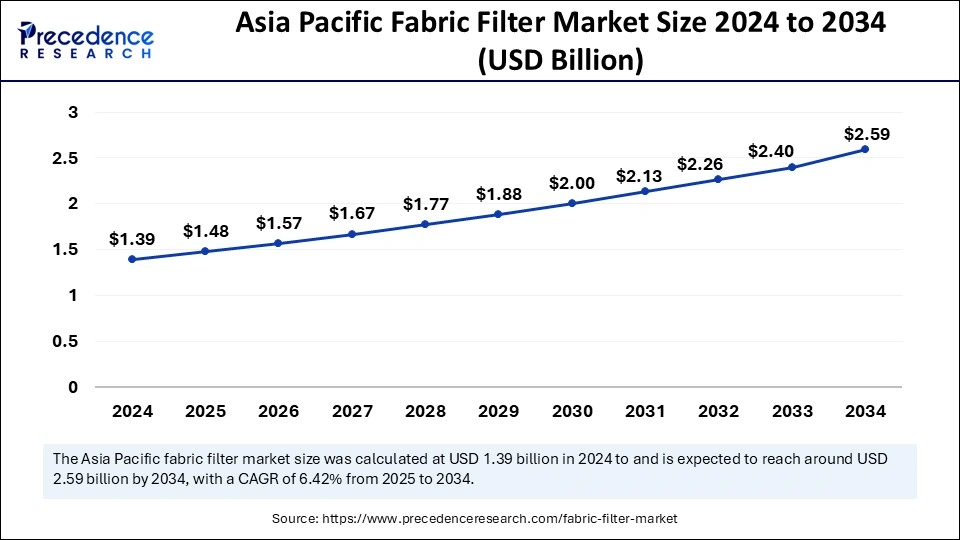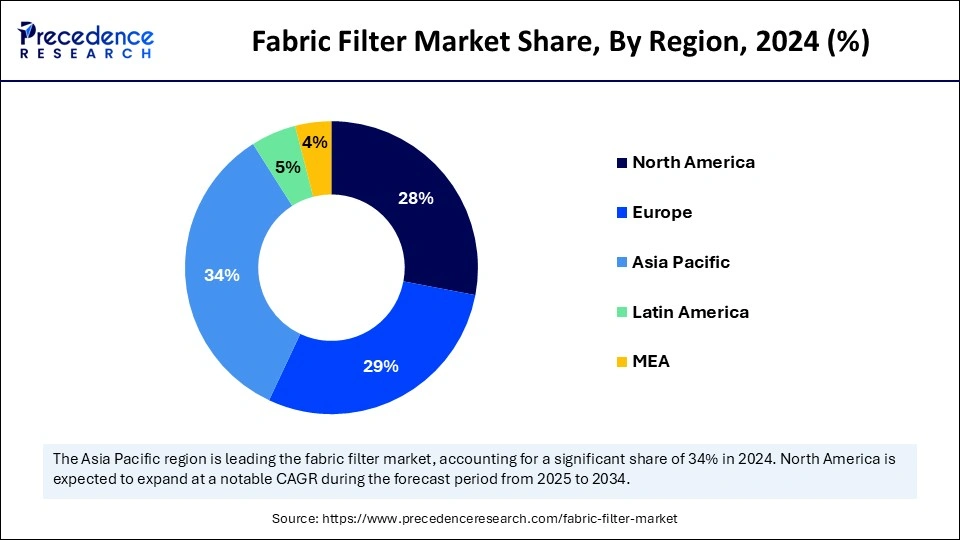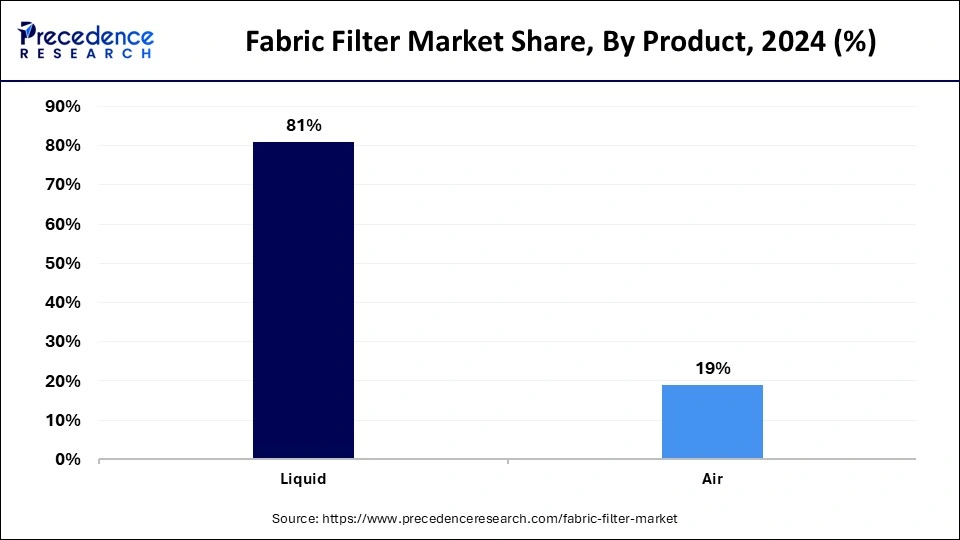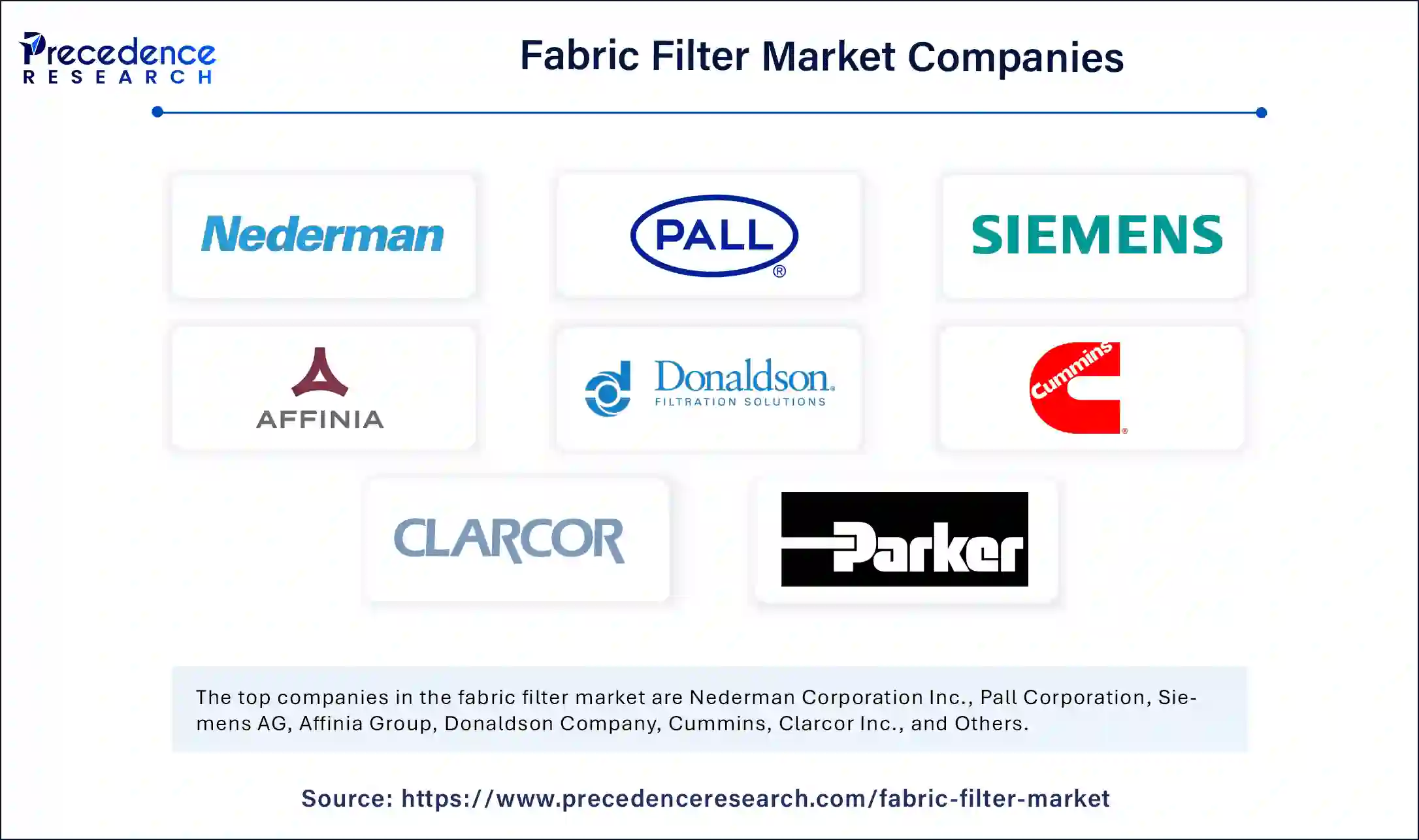November 2024
The global fabric filter market size is calculated at USD 4.36 billion in 2025 and is forecasted to reach around USD 7.50 billion by 2034, accelerating at a CAGR of 6.22% from 2025 to 2034. The Asia Pacific market size surpassed USD 1.39 billion in 2024 and is expanding at a CAGR of 6.42% during the forecast period. The market sizing and forecasts are revenue-based (USD Million/Billion), with 2024 as the base year.
The global fabric filter market size accounted for USD 4.10 billion in 2024 and is predicted to increase from USD 4.36 billion in 2025 to approximately USD 7.50 billion by 2034, expanding at a CAGR of 6.22% from 2025 to 2034. The rising environmental regulations across the globe are the key factor driving the growth of the market. Also, the increasing concerns over air pollution, coupled with the innovations in fabric filter technologies, can fuel market growth further.

Artificial Intelligence plays a key role in the fabric filter market by improving fabric inspection, grade control and identifying defects through innovative machine learning and computer vision technologies, which leads to enhanced product quality and efficiency. Furthermore, AI-powered analytics can process data from numerous sources, such as manufacturing processes, inspection outcomes, and customer feedback, offering crucial insights into overall product quality. AI can also help allocate resources more effectively, which leads to streamlined and more sustainable supply chain operations.
The Asia Pacific fabric filter market size was exhibited at USD 1.39 billion in 2024 and is projected to be worth around USD 2.59 billion by 2034, growing at a CAGR of 6.42% from 2025 to 2034.

North America dominated the fabric filter market in 2024. The dominance of the region can be attributed to the ongoing technological innovations in filter media and design advancements. The innovations of high-performance filter materials like nanofiber-coated fabrics, PTFE membranes, and aramid fibers. Moreover, the growing emphasis on sustainable filtration and energy-efficient solutions can soon impact regional growth.
U.S. Market Trends
In North America, the U.S. led the market owing to the growing industrial emissions control needs and strict environmental regulations. Also, state-level initiatives and policies further reinforce the requirement for innovative filtration systems, further contributing to market growth.
Asia Pacific is expected to grow at the fastest rate over the period studied. The growth of the region can be credited to the surge in industrialization and strict environmental regulations in the region. Furthermore, the rising adoption of fabric filters in steel mills, power plants, and other heavy industries is impacting positive market growth shortly.

China Market Trends
In Asia Pacific, China dominated the fabric filter market in 2024. The dominance of the country can be linked to China's current efforts to combat air pollution. The stringent environmental regulations in the country have substantially raised the demand for fabric filters in various sectors like cement manufacturing, power generation, and metal processing.
Fabric filters are devices that remove particulates from a gas stream by transferring air through a layer of cloth filtration. These filters are specifically created for air pollution control. It uses envelopes, fabric filter tubes, or cartridges to catch and separate particles and dust. They have extensive applications in facilities ranging from small-scale settings to industrial facilities, such as cement plants and coal-fired power plants. The fabric filter market has many applications, including dust production, by fixing their size and type.
| Report Coverage | Details |
| Market Size by 2034 | USD 7.50 Billion |
| Market Size in 2025 | USD 4.36 Billion |
| Market Size in 2024 | USD 4.10 Billion |
| Market Growth Rate from 2025 to 2034 | CAGR of 6.22% |
| Dominated Region | Asia Pacific |
| Fastest Growing Market | North America |
| Base Year | 2024 |
| Forecast Period | 2025 to 2034 |
| Segments Covered | Product, End-use, and Regions |
| Regions Covered | North America, Europe, Asia-Pacific, Latin America, and Middle East & Africa |
Drivers
The rapid digitalization of products for filtering
The real-time monitoring of filters has become a major market driver due to the surge in the utilization of digital filtration methods in various applications. These filters are well-equipped with sensors that regulate the load condition of these cleaners and give service-related data to plant operators. In addition, this gathered information optimizes maintenance forecasting and system performance analysis and simplifies regulatory and analysis processes.
Competition from alternative technologies
The competition from substitute technologies is the major factor restraining the fabric filter market. Technologies such as electrostatic precipitators (ESPs) and scrubbers provide substitute methods for the removal of particulate matter and can be more convenient for specific applications, particularly those with specific particle characteristics and very high dust loads. Moreover, Fabric filters can sometimes accumulate electrostatic charge, which in turn impacts their performance negatively and hence requires special considerations.
Increasing adoption in diverse industries
The diversity of fabric filters has facilitated their adoption across an extensive range of sectors beyond their conventional use in manufacturing settings and power plants. Furthermore, the surge in demand for air pollution management in many sectors like pharmaceuticals, food and beverage, and chemicals has opened new avenues for the market to expand. These filters are especially effective in managing emissions from processes that create fine particles and dust.
The liquid segment held the largest fabric filter market share in 2024. The dominance of the segment can be linked to the growing need for sophisticated filtration solutions across numerous industries, such as pharmaceuticals, water treatment, food and beverages, and chemicals. Furthermore, liquid filters are created to remove solids and other impurities from various liquid streams. Ensuring process efficiency, product quality, and environmental compliance.

The air segment is expected to grow at a significant rate over the projected period. The growth of the segment can be driven by the latest technological innovations in fabric filtration media, like aramid fibers, polytetrafluoroethylene (PTFE) membranes, and nanofiber coatings, which are improving the lifespan and efficiency of air filtration systems. The particulate matter deposits on the outer or inner surfaces of the filter bags when the clean air goes through. The gathered dust is then periodically removed from filter bags utilizing numerous methods, like reverse air, shaking, and pulse jet cleaning.
The water and wastewater segment dominated the fabric filter market in 2024. The dominance of the segment can be attributed to the growing global demand for hygienic water along with the strict environmental regulations imposed by governments across the globe. Additionally, water scarcity and the adverse effects of climate change, such as floods and droughts, are facilitating funding for inefficient water treatment management and conservation. Advancements in water treatment technologies like advanced oxidation processes and membrane separation are enhancing efficiency and minimizing overall costs.
The oil and gas segment is expected to show the fastest growth over the forecast period. The growth of the segment can be credited to the high generation of particulate emissions from catalytic cracking, combustion, and fluidized bed operations in oil refineries and petrochemical plants. Gas transmits through the fabric, and then particles get trapped on the surface of the bags, making a "cake" that does the filtration process. Also, fabric filters decrease maintenance costs and improve the life of main processing equipment, further boosting their adoption.

By Product
By End-use
By Region
For inquiries regarding discounts, bulk purchases, or customization requests, please contact us at sales@precedenceresearch.com
No cookie-cutter, only authentic analysis – take the 1st step to become a Precedence Research client
November 2024
February 2025
February 2025
October 2024